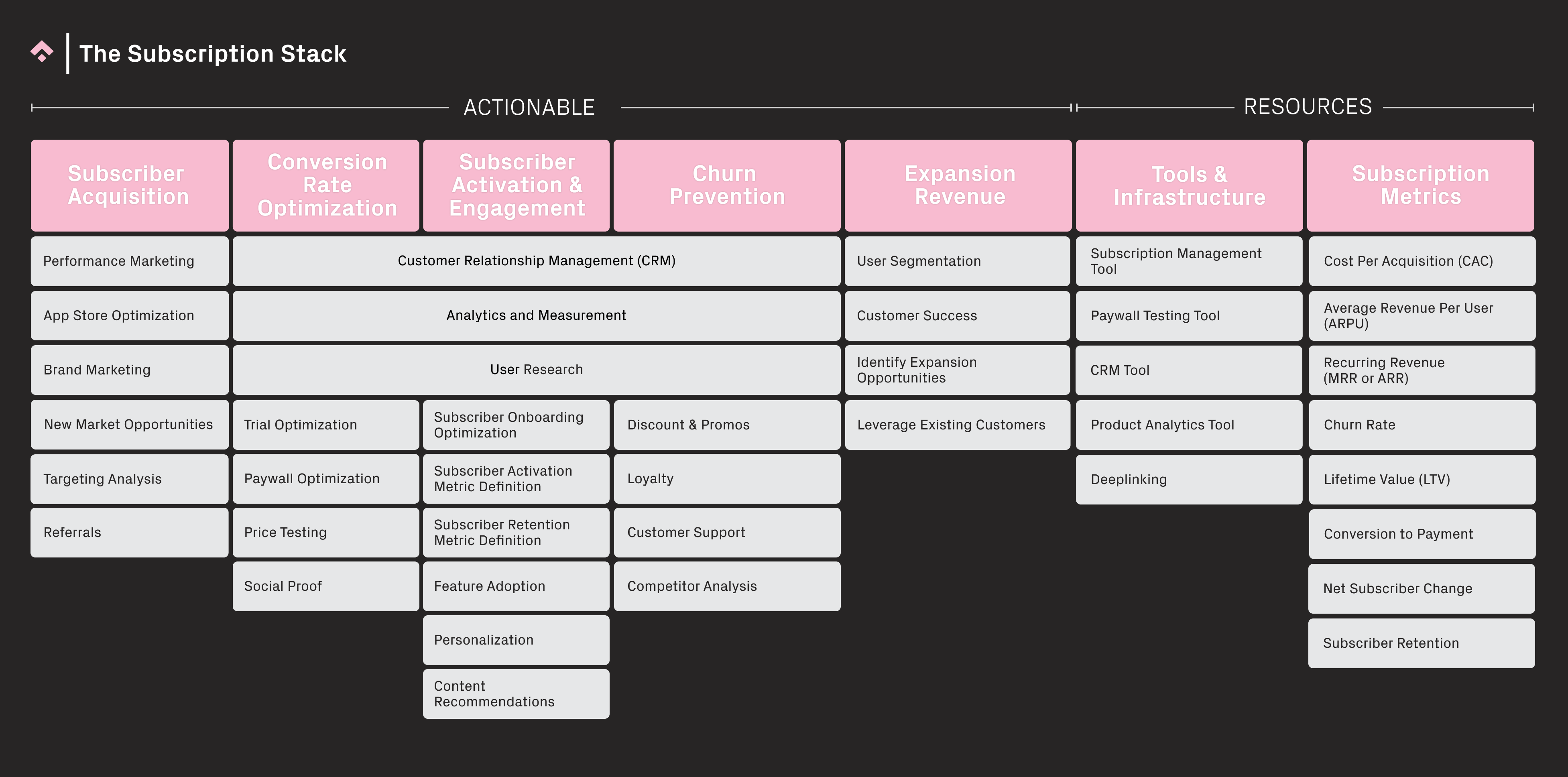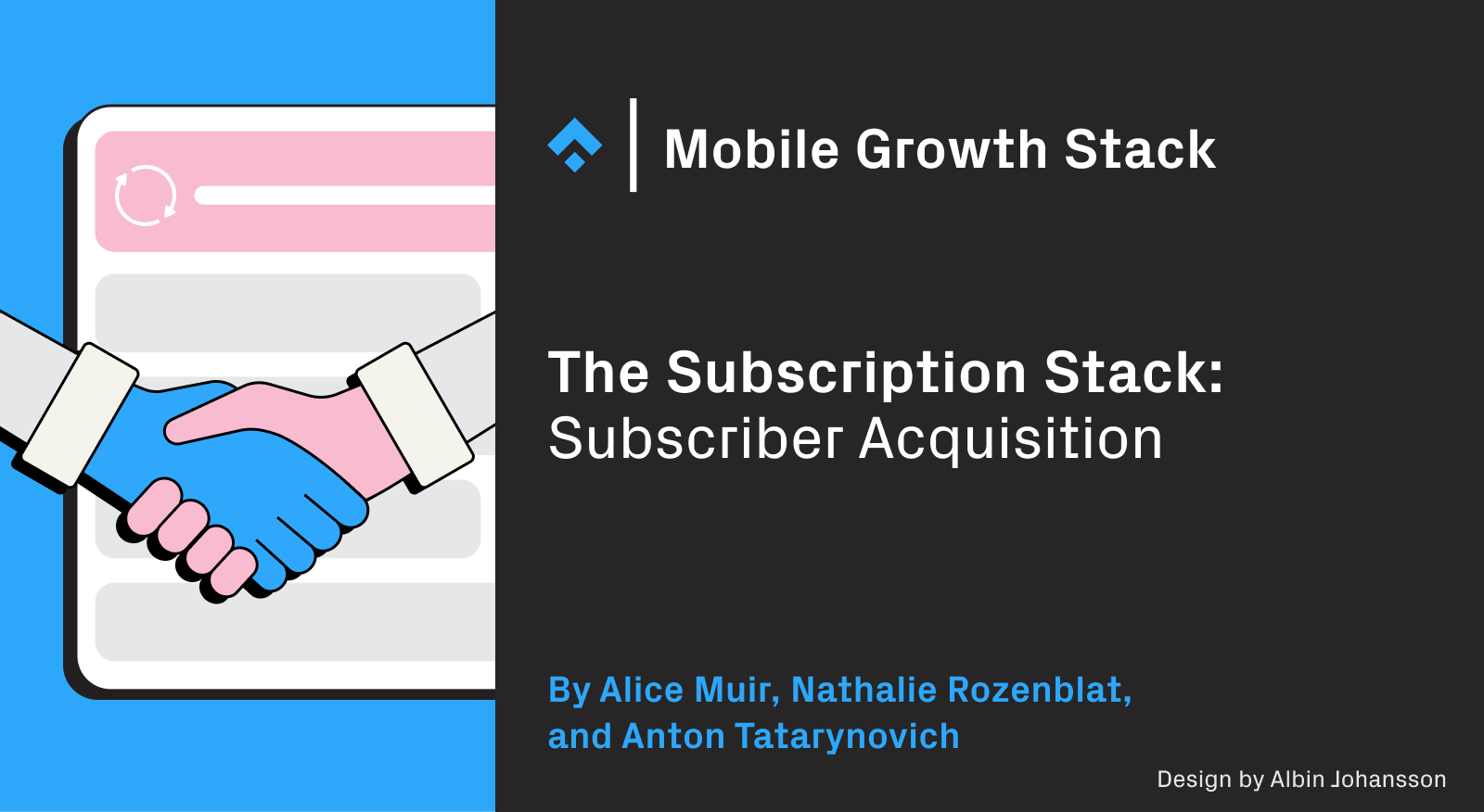
This is the first blog in our series on the Subscription Stack. Each blog post introduces a key layer of the Stack, and the importance of that layer to your own subscription optimization strategy for your app or game. Here we introduce the Acquisition Layer, and how to optimize your app subscriber acquisition strategy to increase paying subscribers.
You can read our Introduction to the Stack here.
Part 1: Subscriber Acquisition
Part 2: Conversion Rate Optimization (CRO)
Part 3: Activation, Engagement, and Churn Prevention
Part 4: Tools and Infrastructure
What is Subscriber Acquisition?
Subscriber acquisition refers to any and all activities related to acquiring new app users to your product or service, and ultimately converting them into a paying user. Under this umbrella of Subscriber acquisition, we have six constituent activities. Performance Marketing, App Store Optimization (ASO), and Brand Marketing are external-facing activities that involve identifying and targeting high quality audiences and bringing them to the product. New Market Opportunities, Targeting Analysis, and Referrals on the other hand are inward-facing activities that come from developing the product itself, whether it’s deriving insights from product and behavioral data, or through the creation of a new referral feature.
This article zooms into the Subscriber Acquisition layers of the Subscription Stack to discuss what you need to consider when undertaking an app user acquisition strategy to gain more subscribers and ultimately increase revenue.
If there is one take home message from the article, it’s that user journeys at this stage should be as smooth as possible – it will pay dividends later in the Subscription Stack and aid your mobile app rentention rate.
Performance Marketing
When conducting performance marketing campaigns, it’s important to help your would-be user along the funnel with the necessary events, beginning with brand awareness campaigns and ending with app install, app free trial (if in place), and ultimately with a paid app subscription. The first step to ensuring success with Performance Marketing (a.k.a. “Paid Acquisition” or “Paid UA”), is to ensure the necessary funnel events are being tracked properly. For example, install to free trial or free trial to subscription.
We highly recommend you vary the concurrent user acquisition campaigns you have running with different creatives and messaging, testing install campaigns separately, from subscription conversion campaigns, and remarketing to capture lapsed users.
When optimizing your app’s user acquisition campaigns, always keep Average Revenue Per User (ARPU) and Lifetime Value (LTV) in mind, as not all subscriptions will bring the same value to your app or game, and you certainly don’t want to have your acquisition costs higher than these values. A solid approach is to analyze cohort data to see which channels/campaigns bring in stickier users, i.e. those likely to bring in more ARPU and LTV.
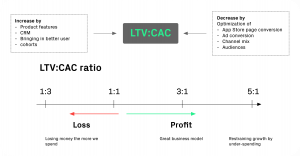
Throughout these campaigns, make it a priority to scrutinize the CTAs you’re using in your ads to make sure the messaging is loud and clear, and also ensure the right landing screens are in place. Quite simply, you want your would-be users to subscribe with as few steps as possible. In conjunction with this, test creatives to determine which value proposition of the subscription lures in more users. Test tactical offers – if any – on your creatives, such as a discount on annual subscriptions vs. monthly.
When we refer to a high quality user, we are referring to the user’s intentions and the likelihood they will subscribe, thus becoming a paying customer. In growth marketing we sometimes run a “segmented retention analysis” to really understand which channels bring in the highest quality users in terms of the likelihood they will subscribe and become a paying customer. Work closely with the Product Team to analyze the retention rates of different audience groups by channel to determine any necessary budget reallocation.
App Store Optimization
ASO is not just an organic user acquisition channel. It’s a middle layer between any paid user acquisition, web link or referral channel, and the app. Keep in mind that everybody who downloads your app ends up on the app store. Therefore, if you are successful with ASO, you may have some positive impact up (e.g. paid UA) and down (e.g. subscriptions) the funnel.
Organic users, particularly those that come from brand search, may have higher activation rates, and, in some cases, can have a higher intention to subscribe (although this is not always the case). We say this because people who find your app organically usually know exactly what they are looking for, what to expect from the product, and therefore they can have a higher intent to download and subscribe. Especially if they found you through brand search as people normally hear about brands through referrals, word of mouth etc.
There’s an opportunity with app Keyword Optimization (“KWO”), to not only optimize for high-volume, popular app keywords, but also for keywords that reflect the app’s core features, the ones that are likely driving subscriptions down the funnel. For example, a meditation app highlighting its premium guided meditations. You can also make a connection between optimizing creative assets (e.g. screenshots) and subscriptions, similar to highlighting premium features with keywords, you can show a popular premium feature in the first screenshot. Users who convert after seeing this creative, likely have a higher intention to subscribe because they converted after seeing the highlighted premium feature.
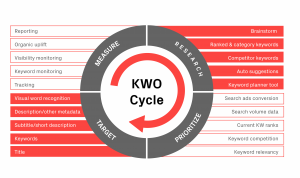
One of the most effective ways to optimize for subscribers, through ASO, is to use “Custom Product Pages” ((“CPPs”) on the App Store, and “Custom Store Listings” (“CSLs”) on Google Play). These tools align the Store Page with whatever message or ad creative was used to drive the traffic to the listing in the first place. (see the Gas example below). The idea is simple, if you promote a feature that drives subscriptions, for example through paid app UA, on your website, or if traffic is generated through a referral link, CPPs and CSLs give us a way to personalize the store page and customize it to meet the needs of the traffic source. In doing so, the user experience is more personal. You, as the publisher, have aligned with their expectations from start to finish.
By establishing that seamless user flow, you can minimize the user drop-off at all stages of the funnel, and hopefully increase the subscription rate at the bottom of the funnel by setting expectations from the get-go.
 .
. 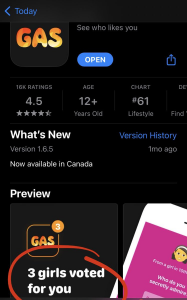
An example of the Gas app using custom iOS listings based on the personalized invite flow.
App Referral Programs
App-based referral programs have grown in popularity over the last few years, and can easily be managed from within the app itself to acquire more customers organically. Typically an app referral program involves providing a reward or incentive in the form of money or credits, to users who successfully encourage their friends to join or spend money on the platform. These work particularly well for delivery and transportation services, such as Uber, HelloFresh or Netflix, due to shared use. New users tend to discover these products through friends, who, in turn, are incentivised to refer them to the product. Andrew Chen goes into detail on that in his essay; “How to design a referral program”.
Keep in mind that app referral programs won’t work for every type of app or product. For example, this model likely wouldn’t make sense for products that use an advertising-only model, such as social networks, since the user LTV is likely so low that it wouldn’t make sense to offer a monetary reward. The referral amounts themselves are a form of CAC.
Conclusion
You should now have a solid overview of the app user Acquisition layer of the stack which will assist your mobile app user acquisition strategy. Whatever means of user acquisition you’re using, from referrals to performance marketing to ASO, we highly recommend making sure the expectations of your app are clear and consistent from the very beginning. Indeed, a strand running through all your User Acquisition efforts needs to be a consistent and fluid user experience, which brings users to your app seamlessly. Making sure this is the case will set the tone for the ongoing relationship with the user and enhance your efforts all along the Subscription Stack.
This is the first blog in our series on the Subscription Stack, of which you can see an overview here. We will cover new market opportunities, which also an element of the Stack, separately.
Before You Go
- The next article in this series is Conversion Rate Optimization, the process of increasing your conversion rate for your app’s subscription.
- Phiture Academy’s new Advanced ASO Course is an illustrative and practical guide to enacting an ASO strategy, to bring organic installs to your app or game.
- An essential component of ASO is keyword optimization, and here at Phiture we’ve refined our own systematic way of undertaking this. Download our Keyword Optimization Cycle Template to make your keyword optimization more efficient and organized, while simultaneously enabling your team to take a data-driven approach at each stage of the process.
- Our Custom Product Pages Playbook is instructive in the best practice use of this powerful concept for user acquisition.
- In this guide, we address the role registration plays towards an app’s retention and long-term success, what to consider when mandating sign-up process, and, finally, some cheeky ways to integrate the account sign-up to ensure a smooth user experience.
Table of Contents




